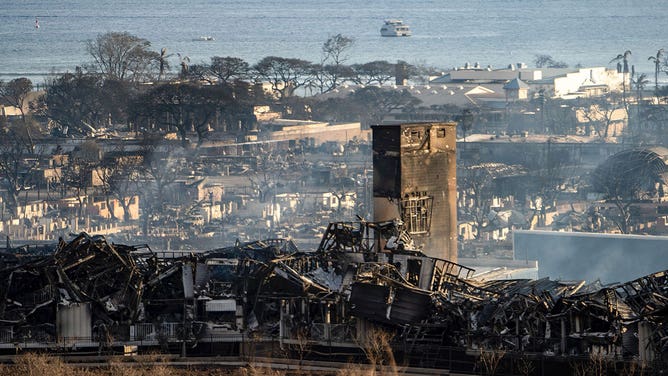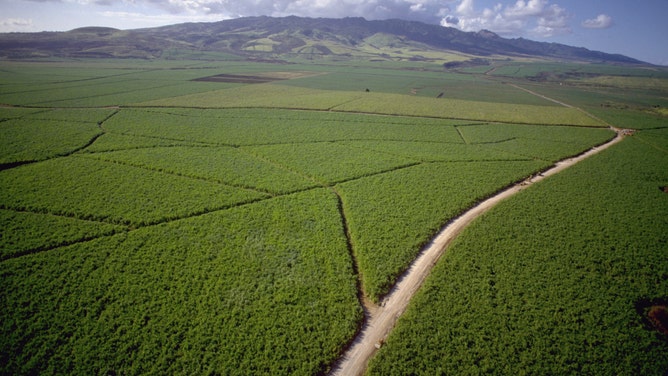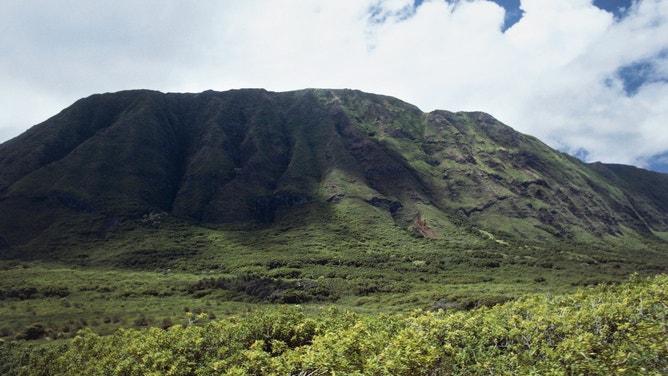Remote Hawaii wildfire could lead to next Lahaina tragedy, experts warn
Extreme drought caused by El Niño dried out invasive grasses that took over the island which triggered a deadly firestorm in Lahaina. Officials say it could happen again across Hawaii.
Hawaii's recent wildfires will make the state more vulnerable to blazes
Fire Protection Forester Michael Walker and Native Ecosystem Manager Emma Yuen discuss how damaging recent Hawaii wildfires are. Native forests are not accustomed to the fire cycle and don't regrow as fast. In the meantime, invasive grasses grow, which makes the community more prone to larger and hotter fires.
The Mililani Mauka Wildfire still burns on the island of Oahu and may not get much media attention because it is not currently threatening homes, but experts say the fire and extremely dry conditions could in the future lead to another Lahaina tragedy.
The fire started on Oct. 30 and continues to smolder in the O'ahu Forest National Wildlife Refuge rain forest. It has so far charred about 1,600 acres – about a third of the land – and is still not fully contained. The acreage may seem small compared to recent massive Western and Canadian wildfires, but the percentage loss is on par.
Invasive grasses take over
"When these fires ravage the landscape and turn these native forests into barren landscapes… oftentimes they are re-colonized by invasive grasses, which actually are very damaging for fire because they burn hotter and ignite faster than a native forest would," explained Emma Yuen, the Native Ecosystem Manager for Hawaii's Department of Land and Natural Resources. "And so a cycle is created when you have these fires that actually makes the landscape more prone to igniting and spreading hotter and more intense fires in the future."
AERIAL FOOTAGE SHOWS SHEER DESTRUCTION AFTER DEADLY HAWAII FIRES ACROSS MAUI

Smoke rises from the remains of Lahaina during the wildfire in Lahaina, Hawaii on August 10, 2023.
(Mengshin Lin for The Washington Post / Getty Images)
Yuen and Michael Walker, the Hawaii Statewide Fire Protection Forester, told FOX Weather that now invasive grasses cover 25% of the state. Many non-native plants evolved in Africa with regular growth and wildfire cycles. The grasses proliferate and are fast to colonize any open spaces in the soil. The resulting wildfires burn more extensively than they would a native Hawaiian forest and travel quicker, they said. They call it the grass fire cycle, which feeds itself.
"Those are really a major threat, particularly for the Lahaina fire and what caused it to be so devastating," Walker said.
WATCH: MAUI POLICE RELEASE BODYCAM FOOTAGE OF HAWAII WILDFIRE RESCUES

A large amount of destruction is visible in Lahaina town after deadly wildfires ravaged parts of Maui island in Hawaii.
(Robert Ray / FOX Weather)
"The only real natural source of (wildfire) ignition was lava flows," Yuen said. "We don’t get thunderstorms and lightning like the continental U.S., and the lava doesn’t last for a long period of time compared to the evolutionary timeline of an island that lasts maybe thousands of years. But Kauai is 6.5 million years old. So, there are 1 million years of plant evolution that have evolved without the presence of fire, and once a fire goes through an undominated area, it doesn’t respond as fast as these grasses do."
Barren farms part of the problem
Past land use also increased the extent of the grass. The two experts used Lahaina's Maui as an example. Sugarcane plantations once covered tens of thousands of acres but were shuttered in 2016, leaving barren land.
WHY ARE THUNDERSTORMS SO RARE ALONG THE PACIFIC COAST?

File: Sugarcane fields in Oahu in 1987.
(Douglas Peebles/Corbis / Getty Images)
"There’s no reforestation going on on these lands. Landowners are just taking advantage of the agricultural tax being lower, but not actively farming or ranching on these lands," Yuen said. "Instead, what you get is a vacuum where all these grasses will grow in there, and then they’ll burn. There’s no management going on, there’s no active farming or ranching, and that’s the real issue right there."
El Niño drying out Hawaii
Weather and climate were the other factors in the perfect storm of destruction that took almost 100 lives on the island in early August.
"With the change from La Niña system to El Niño, that kind of transition this summer really impacted our levels of rainfall, so the entire island of Oahu right now is in a severe drought," said Walker. "That includes areas of the forest that normally would be receiving 200 inches of rain per year on average. So, very little rainfall has really impacted this fire in particular conditions."
STRONG EL NINO WINTER: WHAT KIND OF WEATHER CAN YOU EXPECT?

Hawaii is 93% in moderate drought.
(U.S. Drought Monitor / NOAA)
Loss of essential watershed makes fire even greater loss
The Mililani Mauka Wildfire burns on Oahu, but 75% of the state is currently in "severe drought," according to the U.S. Drought Monitor. The fire also burns over a Priority 1 watershed, according to the Wildfire Incident Information System. The area feeds the Pearl Harbor Aquifer, which most of Oahu depends on for freshwater.
"Here in Hawaii, you can think of these for us as a giant living sponge that has mosses and ferns and trees that absorb rain and cloud water," said Yuen.

File: Vegetation on Oahu.
(DeAgostini / Getty Images)
WHAT EXCESS RAIN MEANS FOR BURN SCARS
"And so when they have this absorption, it trickles down into our underground freshwater supplies. So wildfires that devastate these forests mean that we can't absorb as much fresh water," she continued. "And so after a fire, we often see a really higher vulnerability to flooding because when rains come (with no plants), it just runs off the mountain into the coastal communities below, bringing a lot of sediment down, as well as smothering our beaches and coral reefs."
With a strong to super El Niño in place, Walker said that will mean a drier wet season and an extremely dry dry season.
"And so it really exacerbates the wildfire conditions here in Hawaii," said Walker.
NOAA's forecast predicts the El Niño pattern to continue through spring.
